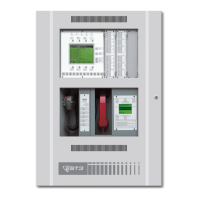EST3 Installation and Service Manual v
Important information
Limitation of liability
This product has been designed to meet the requirements of
NFPA Standard 72; Underwriters Laboratories, Inc., Standard
864; and Underwriters Laboratories of Canada, Inc., Standard
ULC S527. Installation in accordance with this manual,
applicable codes, and the instructions of the Authority Having
Jurisdiction is mandatory. GE Security shall not under any
circumstances be liable for any incidental or consequential
damages arising from loss of property or other damages or losses
owing to the failure of GE Security products beyond the cost of
repair or replacement of any defective products. GE Security
reserves the right to make product improvements and change
product specifications at any time.
While every precaution has been taken during the preparation of
this manual to ensure the accuracy of its contents, GE Security
assumes no responsibility for errors or omissions.
FCC warning
This equipment can generate and radiate radio frequency energy.
If this equipment is not installed in accordance with this manual,
it may cause interference to radio communications. This
equipment has been tested and found to comply within the limits
for Class A computing devices pursuant to Subpart B of Part 15
of the FCC Rules. These rules are designed to provide
reasonable protection against such interference when this
equipment is operated in a commercial environment. Operation
of this equipment is likely to cause interference, in which case
the user at his own expense, will be required to take whatever
measures may be required to correct the interference.
Industry Canada information
Note: The Industry Canada label identifies certified equipment.
This certification means that the equipment meets certain
telecommunications network protective, operational, and safety
requirements. Industry Canada does not guarantee the equipment
will operate to the user’s satisfaction.
Before installing this equipment, users should ensure that it is
permissible to be connected to the facilities of the local
telecommunications company. The equipment must also be
installed using an acceptable method of connection. The
customer should be aware that compliance with the above
conditions may not prevent degradation of service in some
situations.

